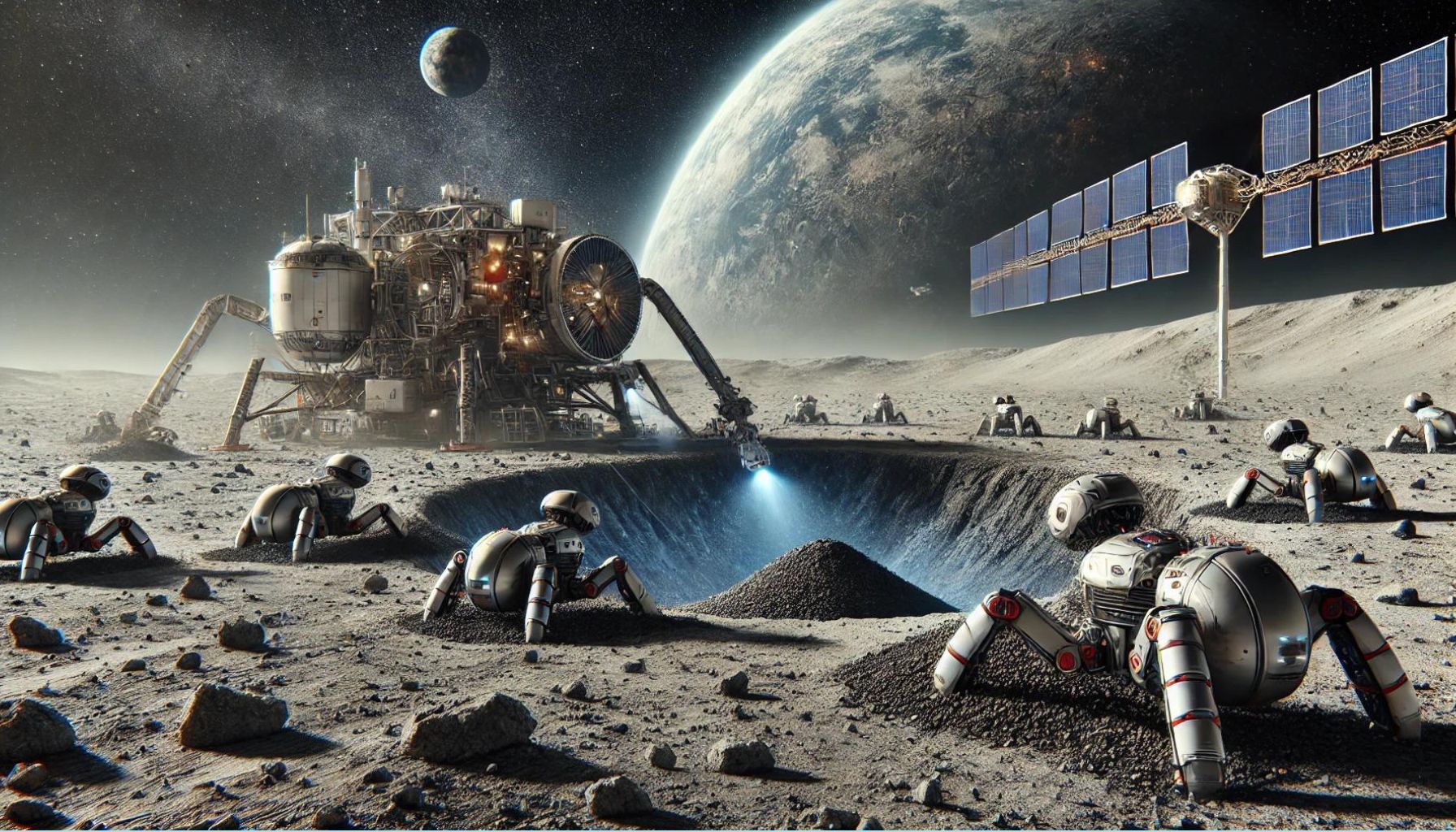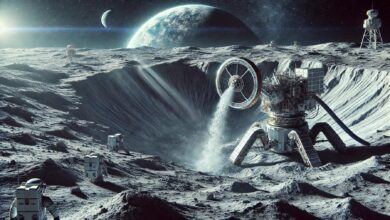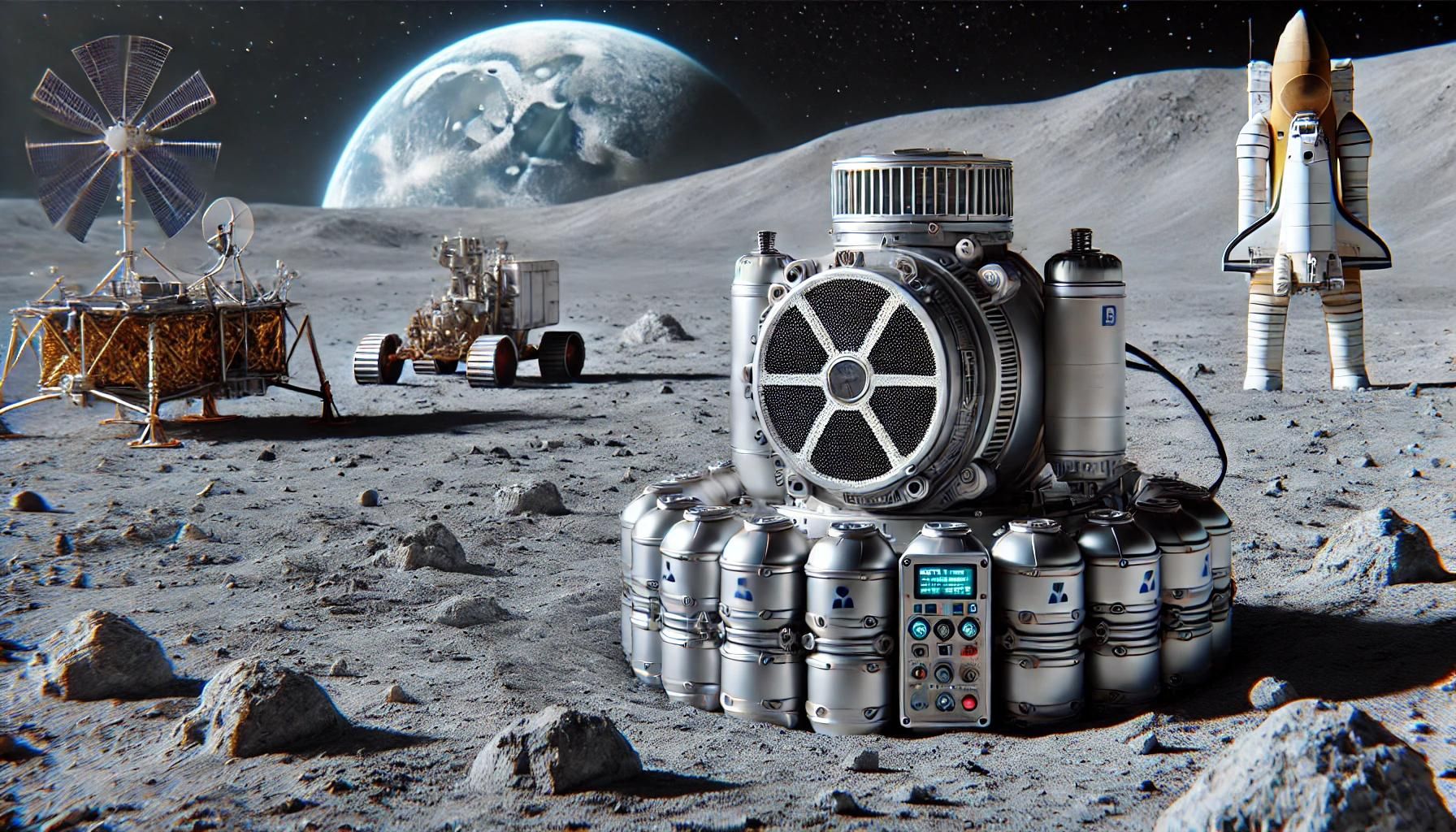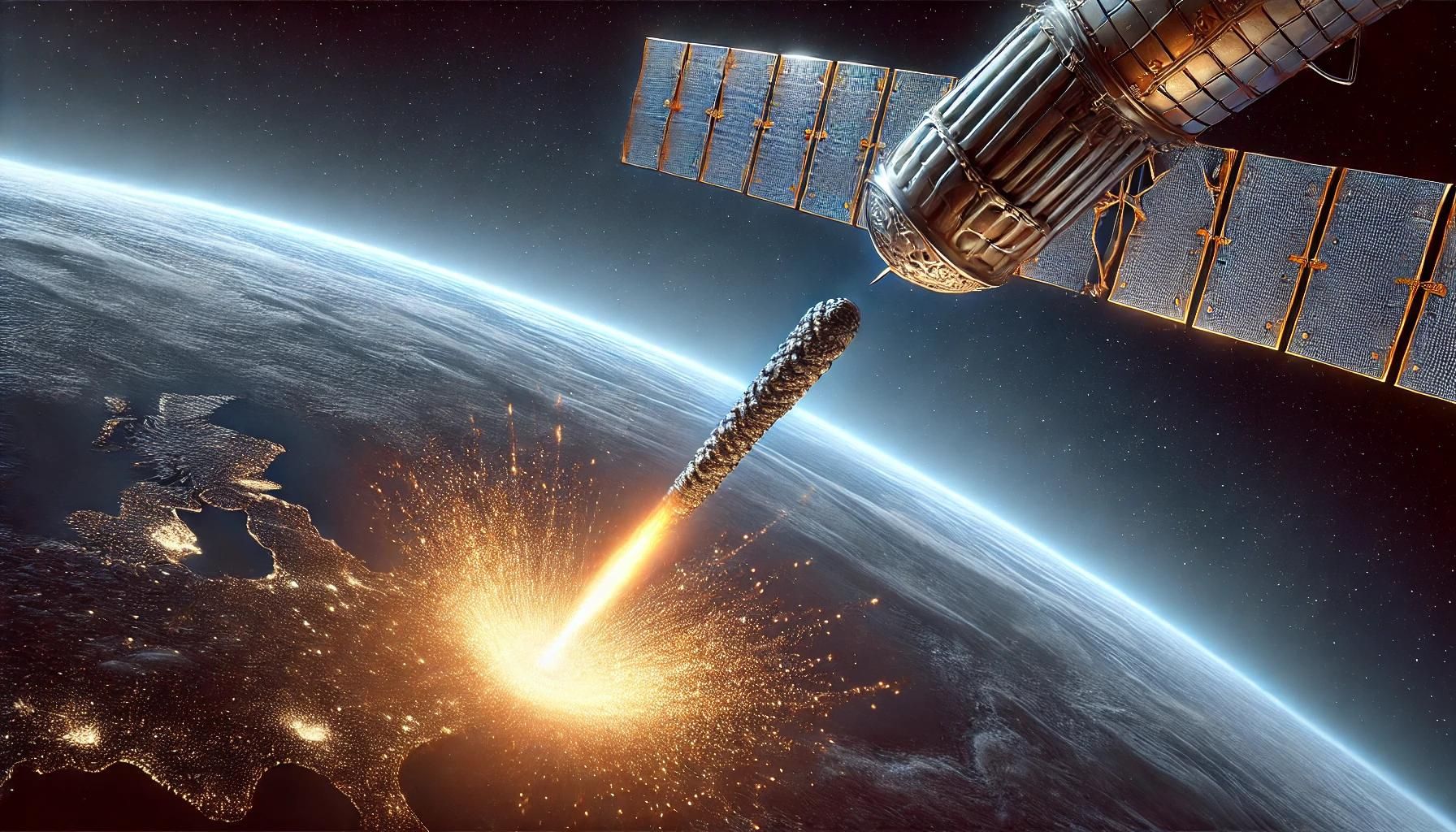How Do You Mine Helium-3?

Helium-3 (He-3) is a rare isotope of helium with significant potential for use in nuclear fusion reactions, promising a cleaner and more efficient source of energy than current nuclear technologies. Mining helium-3 is a complex process due to its scarcity on Earth and the technical challenges of extracting it from lunar or extraterrestrial sources. This article explores the methods and technologies involved in mining helium-3 on Earth, the Moon, and in space, detailing the steps required to harness this valuable resource.
Helium-3 Mining on Earth
Sources of Helium-3
Helium-3 is extremely rare on Earth, primarily found in trace amounts within natural gas deposits and as a byproduct of tritium decay in nuclear reactors. The isotope is valuable for its potential use in fusion reactors, where it can produce energy with minimal radioactive waste. However, the scarcity of helium-3 on Earth makes mining it directly from terrestrial sources impractical and expensive.
Extraction from Natural Gas
- Natural Gas Processing: Helium-3 can be extracted from natural gas, where it is found in very small quantities. The process involves:
- Gas Collection: Natural gas is collected from underground reservoirs.
- Fractional Distillation: The gas undergoes fractional distillation to separate helium from other components like methane and nitrogen.
- Isotope Separation: Once helium is isolated, advanced separation techniques, such as cryogenic distillation or gas chromatography, are used to extract helium-3 from the more abundant helium-4.
- Cost and Feasibility: Extracting helium-3 from natural gas is highly costly and yields only minuscule amounts of the isotope. The process is not economically viable for large-scale energy production but remains a source for research and specialized applications.
Tritium Decay
- Nuclear Reactors: Tritium, a radioactive isotope of hydrogen, decays into helium-3 over time. Tritium is produced in nuclear reactors, particularly in heavy water reactors.
- Decay Process: Tritium decays into helium-3 with a half-life of about 12.3 years.
- Collection: The helium-3 produced from tritium decay is collected from the reactor systems, where it accumulates over time.
- Applications: The helium-3 obtained from tritium decay is primarily used in scientific research and in neutron detection equipment. While this method provides a steady source of helium-3, the quantities are limited and insufficient for large-scale energy production.
Helium-3 Mining on the Moon
The Lunar Surface as a Helium-3 Source
The Moon is rich in helium-3, embedded in the lunar regolith (soil) by billions of years of solar wind bombardment. The lunar surface is considered the most promising source of helium-3 for future fusion reactors.
Prospecting and Site Selection
- Remote Sensing: Initial prospecting involves using satellites equipped with spectrometers to identify regions with high concentrations of helium-3. Remote sensing helps map the distribution of the isotope across the lunar surface.
- Lunar Reconnaissance Orbiter (LRO): NASA’s LRO provides detailed maps of the Moon’s surface, identifying potential mining sites.
- Surface Exploration: Robotic rovers and landers conduct on-site analysis to confirm the presence of helium-3. Instruments like neutron spectrometers and mass spectrometers measure the concentration of the isotope in the regolith.
Extraction Process
- Regolith Collection: The first step in extracting helium-3 is collecting lunar regolith. Robotic mining machines equipped with drills and scoops excavate the soil.
- Robotic Mining Machines: Autonomous rovers, similar to NASA’s Artemis program designs, are used to dig and collect the regolith.
- Heating the Regolith: The collected regolith is transported to processing units, where it is heated to release the trapped gases.
- Heating Mechanism: The soil is heated to temperatures around 600-700 degrees Celsius, causing helium-3 and other volatiles to be released.
- Gas Collection and Separation: The released gases are collected and filtered to isolate helium-3 from other components.
- Cryogenic Distillation: Cryogenic techniques cool the gas mixture to separate helium-3 from other gases based on their different boiling points.
Storage and Transport
- Liquefaction and Storage: Helium-3 is liquefied by cooling it to -269 degrees Celsius and stored in specially designed containers that maintain these low temperatures.
- Storage Containers: These containers are made from materials capable of withstanding the harsh conditions of space and preventing contamination.
- Transport to Earth: The stored helium-3 is transported back to Earth using return modules designed to safely re-enter the Earth’s atmosphere.
- Return Modules: These modules are equipped with heat shields and parachutes to ensure a safe landing and retrieval of the helium-3.
Economic and Technical Challenges
- High Costs: The cost of lunar mining operations, including the development of robotic miners and transportation systems, is currently very high.
- Technological Development: Significant advancements in robotics, autonomous systems, and space logistics are required to make lunar helium-3 mining viable.
Helium-3 Mining in Space
Asteroids and Gas Giants
Apart from the Moon, asteroids and gas giants like Jupiter and Saturn are potential sources of helium-3.
Asteroid Mining
- Prospecting: Space telescopes and exploratory missions identify asteroids with potential helium-3 deposits.
- Spacecraft Missions: Missions like NASA’s OSIRIS-REx and Japan’s Hayabusa2 provide valuable data on asteroid composition.
- Extraction Techniques: Similar to lunar mining, robotic systems are deployed to collect regolith from asteroids.
- Microgravity Challenges: Mining in microgravity environments presents unique challenges, requiring specialized equipment to anchor robots and collect materials effectively.
- Processing and Transport: Extracted materials are processed in space, and helium-3 is transported back to Earth using similar techniques as lunar mining.
Gas Giants
- Atmospheric Mining: Gas giants like Jupiter and Saturn have atmospheres rich in helium-3.
- Aerial Platforms: Advanced concepts propose using aerial platforms to skim the upper layers of gas giants’ atmospheres, collecting helium-3 directly from the gas clouds.
- Feasibility and Challenges: Mining helium-3 from gas giants is currently theoretical and poses significant technical challenges, including the development of durable aerial mining platforms and the ability to transport the collected helium-3 back to Earth.
International Collaboration and Future Prospects
- Global Efforts: The successful mining of helium-3 will likely require international collaboration, combining resources and expertise from various space agencies and private companies.
- International Space Station (ISS): Collaborative projects on the ISS provide a model for future joint ventures in space mining.
- Technological Innovation: Continuous advancements in robotics, AI, and space exploration technologies are essential for the practical implementation of helium-3 mining.
- Sustainable Energy Source: If successfully harnessed, helium-3 has the potential to provide a nearly limitless and clean source of energy for future generations, reducing our dependence on fossil fuels and mitigating environmental impacts.
Mining helium-3 is a complex and challenging endeavor with significant potential rewards. While Earth-based sources are limited and costly, the Moon offers a more abundant supply, with asteroids and gas giants presenting additional opportunities. Technological advancements and international cooperation are crucial for overcoming the challenges and making helium-3 mining a reality. As we continue to explore and utilize space resources, helium-3 could play a pivotal role in our energy future, driving both scientific progress and sustainable development.
References
- NASA. “Helium-3 Mining on the Moon.” NASA.gov
- ESA. “Asteroid Mining and Helium-3 Extraction.” ESA.int
- IEEE Spectrum. “Mining Helium-3 from the Moon.” IEEEspectrum.org
- Planetary Resources. “Asteroid Mining Technologies.” Planetaryresources.com
- Space.com. “The Future of Helium-3 Mining.” Space.com
These sources provide a comprehensive overview of the current state and future potential of helium-3 mining, highlighting the technological innovations and collaborative efforts required to make this promising energy source a reality.



